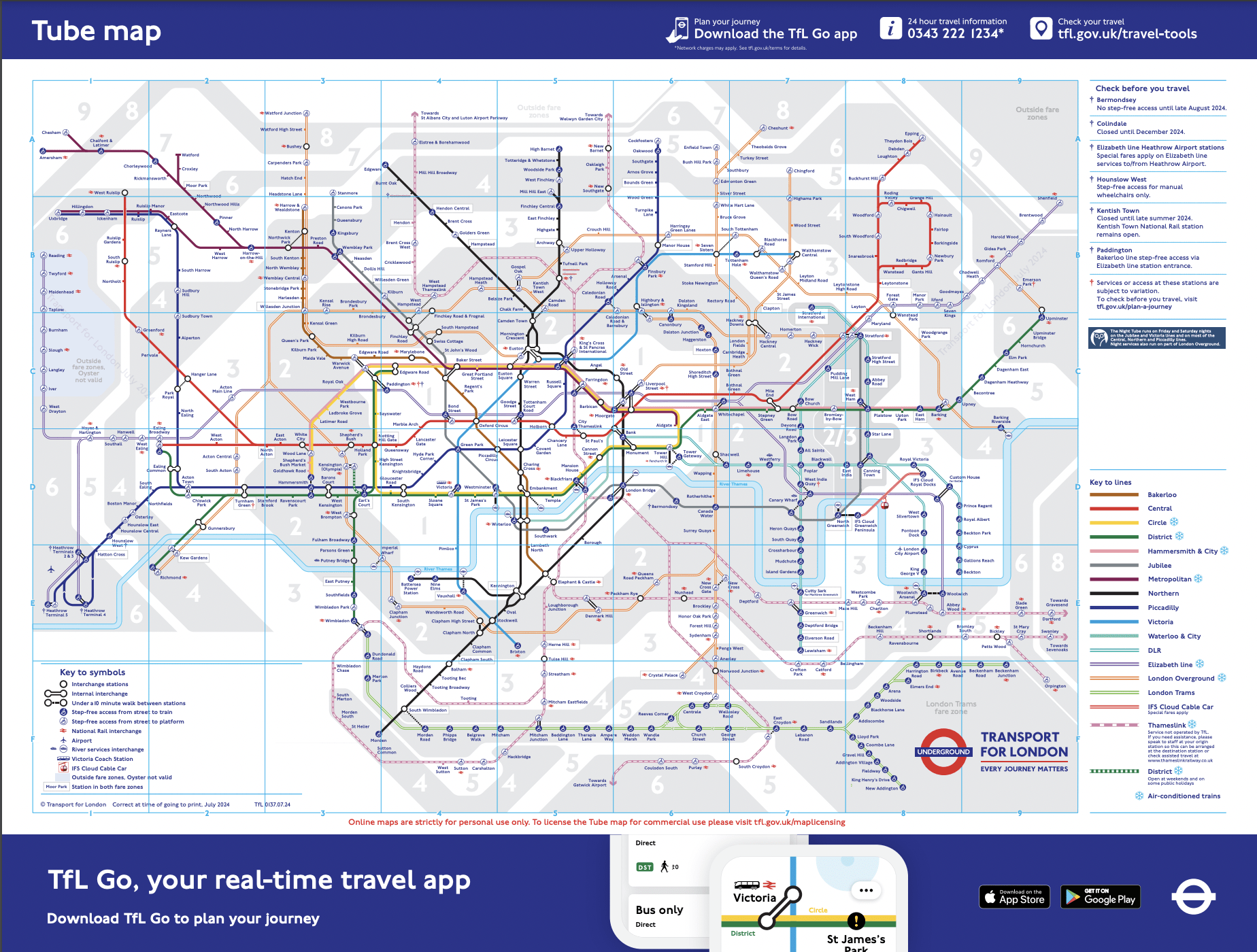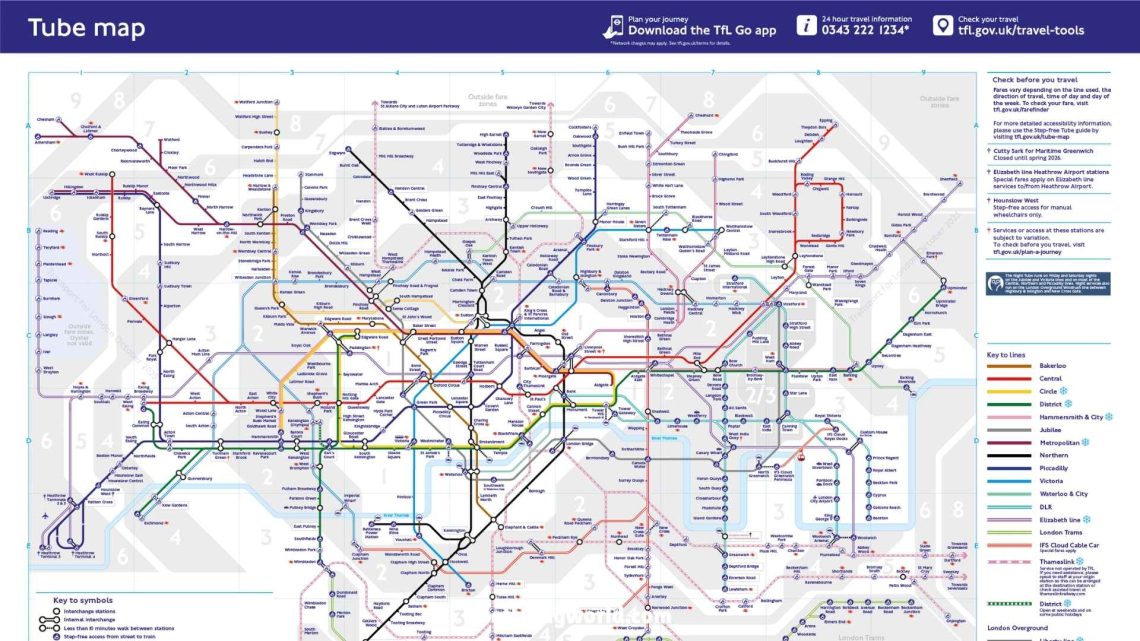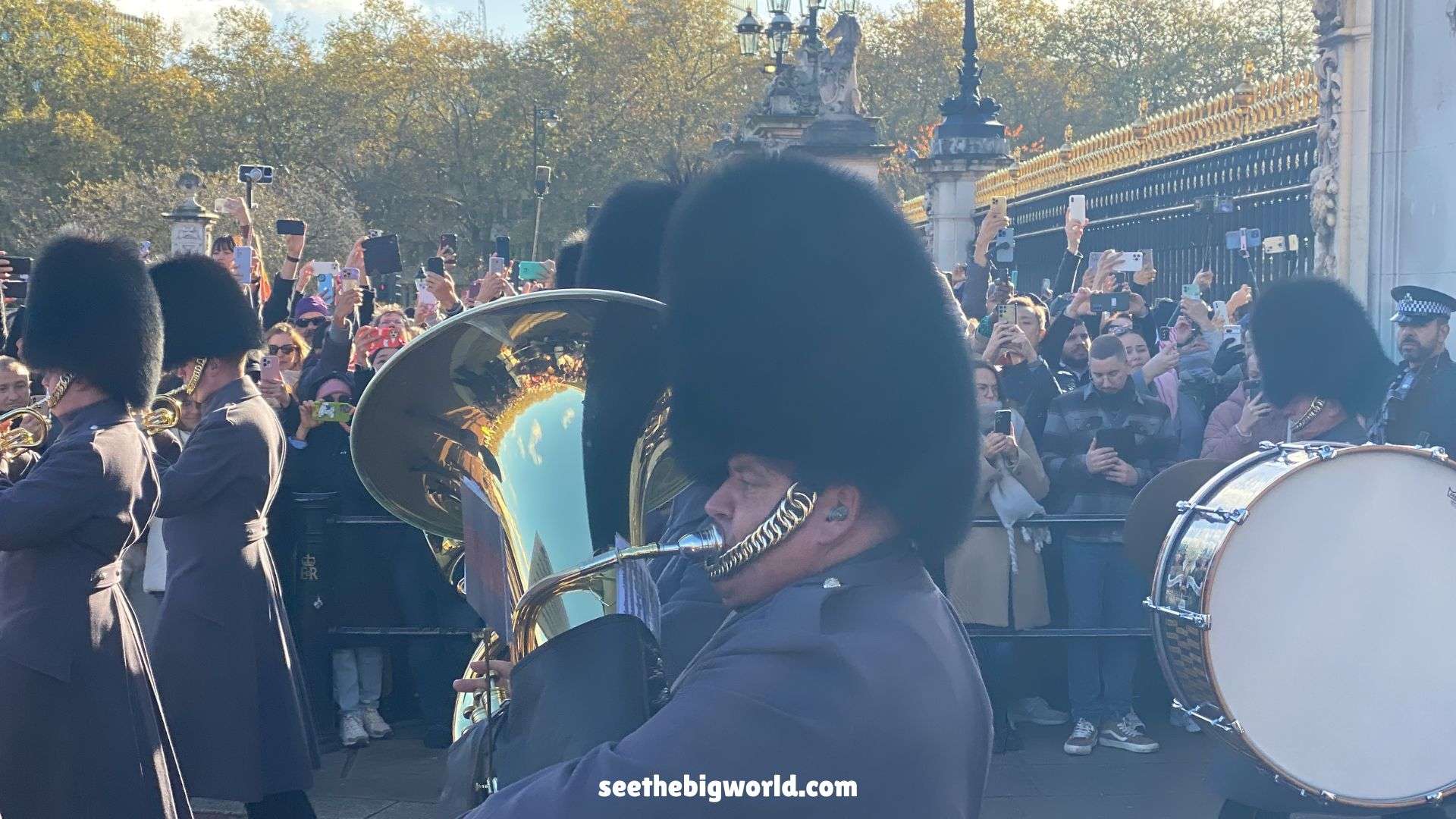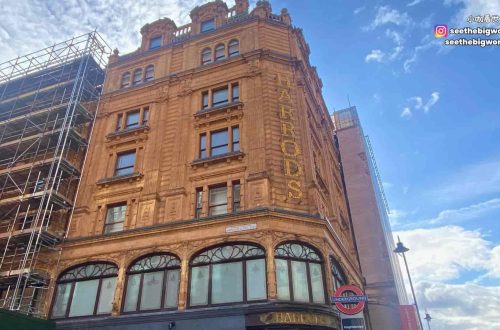Updated on 04/12/2025 | Published on 06/11/2025
The ultimate London transport guide: learn how to get from Heathrow to the city, reach top attractions by Tube, and explore nearby cities by train. Includes fares, Tube-to-attraction list, plus tips on buses, Uber Boat and car rental—all in one easy guide.
Read Before Your Trip
UK City Guides:London|Liverpool
London Articles:Top Attractions|London Pass Guide|Day Trips From London|London Itinerary|London Transportation Guide|London for Seniors|Harrods|Buckingham Palace Changing of the Guard
Passes:London Pass|BritRail Pass|Euro Train Pass
Buckingham Palace:Get Your Guide|KLOOK
Westminster Abbey:Get Your Guide|KLOOK
Tower of London:Get Your Guide|KLOOK
London Eye:Get Your Guide|KLOOK
Day Trip to Windsor Castle, Stonehenge, and Bath:Get Your Guide|KLOOK
London Main Attractions and Food Map
This map highlights London’s classic attractions (deep red camera icons), themed experiences within the city (black hearts, yellow footballs, blue music notes), central dining spots (orange fork and knife), and shopping destinations (red and black shopping bags).
The map is set to English by default. Simply click on the 'Enlarge Map' icon in the top right corner to switch to your preferred language!
How to Get from Heathrow Airport to Central London
Planning your trip from Heathrow Airport to central London? Here’s a complete guide to the latest fares and transport options. From the budget-friendly Tube to the fast Heathrow Express or private transfers, each option has its pros and cons—choose the one that best fits your time and budget.
| Transport | Price (Adult One Way) | Arriving at | Travelling Time | Notes |
| Tube (Piccadilly Line) | £5.80 | Green Park、South Kensington、Piccadilly Circus、Leicester Square、Hyde Park Corner | ~ 60 mins | Lower fare, but older carriages, more stops, and crowded during peak hours. |
| Tube (Elizabeth Line) | £13.90 | Paddington、Bond Street、Tottenham Court Road、Farringdon、Liverpool Street | ~ 25-28 mins | New line with spacious and comfortable trains, though some stations require longer walks. |
| Heathrow Express | £25 | Paddington | ~ 15 mins | Fastest option but slightly more expensive. |
| National Express(Coach) | Approx. £10 (Depending on Schedule) | Victoria | ~ 60 mins (Depending on traffic) | Prone to traffic congestion, making journey times less predictable. |
Private transfer services available to central London
London Underground, DLR and Overground
Understanding the London Underground System and Zones
The London Underground is the world’s oldest metro system, first opened in 1863 with gas lamps and steam locomotives. Today it has expanded into a city-wide network divided into nine fare zones, with most central attractions located in Zones 1 and 2. Owing to its narrow, tube-shaped tunnels, it became known as “The Tube,” a nickname that remains part of everyday London culture.
The DLR (Docklands Light Railway) primarily serves the Docklands area in East London, making it convenient for visiting attractions like Greenwich.
The Overground is a railway network connecting central London with the suburbs. It’s particularly useful for reaching areas outside the city centre, such as Camden Market.

London Underground Fares and Payment Methods
I’d recommend using a contactless credit or debit card for travel instead of an Oyster Card (and definitely avoid buying single tickets!). Just use the same card for all your journeys, and the system will automatically apply daily and weekly fare caps, saving you from overpaying.
As of 2025 ticket prices, a single fare in Zone 1 during peak hours is £2.90 (and £2.80 during off-peak hours). The daily fare cap for travel between Zone 1 and Zone 2 is £8.90 when using the same credit or debit card.
- For detailed fare information, please refer to:Official website
Popular Tube Stations and Their Corresponding Attractions (Super Handy Guide)
| Metro Station | Nearby Attractions | Lines (Colour) |
| Green Park | Piccadilly Line (Dark Blue) Victoria Line (Light Blue) Jubilee Line (Grey) |
|
| Westminster | Jubilee Line (Grey) District Line (Green) Circle Line (Yellow) |
|
| Tower Hill | District Line (Green) Circle Line (Yellow) |
|
| St Paul’s | Central Line (Red) | |
| High Street Kensington | Circle Line (Yellow) District Line (Green) |
|
| Waterloo | Jubilee Line (Grey) Northern Line (Black) Bakerloo Line (Brown) |
|
| London Bridge | Jubilee Line (Grey) Northern Line (Black) |
|
| Tottenham Court Road | Central Line (Red) Northern Line (Black) |
|
| South Kensington | Piccadilly Line (Dark Blue) Circle Line (Yellow) District Line (Green) |
|
| Cutty Sark (DLR) | DLR (Turquoise/Light Green,Docklands Light Railway) | |
| King’s Cross St Pancras | Northern Line (Black) Piccadilly Line (Dark Blue) Circle Line (Yellow) Hammersmith & City Line (Pink) Metropolitan Line (Purple) |
|
| Baker Street | Bakerloo Line (Brown) Circle Line (Yellow) Jubilee Line (Grey) Metropolitan Line (Purple) Hammersmith & City Line (Pink) |
|
| Notting Hill Gate | Central Line (Red) Circle Line (Yellow) District Line (Green) |
|
| Wembley Park | Jubilee Line (Grey) Metropolitan Line (Purple) |
|
| Arsenal | Piccadilly Line (Dark Blue) | |
| Fulham Broadway | District Line (Green) | |
| Charing Cross | Bakerloo Line (Brown) Northern Line (Black) |
|
| Covent Garden | Piccadilly Line (Dark Blue) | |
| Oxford Circus | Central Line (Red) Bakerloo Line (Brown) Victoria Line (Light Blue) |
|
| Leicester Square | Northern Line (Black) Piccadilly Line (Dark Blue) |
|
| Knightsbridge | Piccadilly Line (Dark Blue) | |
| Camden Town | Northern Line (Black) | |
| Hyde Park Corner | Piccadilly Line (Dark Blue) | |
| St James’s Park | District Line (Green) Circle Line (Yellow) |
|
| Richmond | District Line (Green) Overground (Orange) |
London Buses, Sightseeing Buses, and River Buses
The iconic red double-decker buses are a symbol of London. You can hop on with an Oyster Card or a contactless credit/debit card. In 2025, a single journey costs £1.75, and you can transfer as many times as you like within one hour. The daily fare cap is £5.25.
If you have The London Pass , you can also use hop-on, hop-off sightseeing buses (which cover most central attractions, though traffic delays can occur) and the Uber Boat on the Thames.
Transport Between London and Other UK Cities (National Rail)
Main Routes, Journey Times & Recommended Cities
London serves as the hub of the UK's train network, making it easy to reach major cities like York, Liverpool, and Edinburgh.
| Destination | Transport & Duration | Highlights & Suggested Itinerary |
| London → Bath |
|
Roman Baths, Royal Crescent, Georgian architecture |
| London → Oxford |
|
Oxford colleges, libraries, and film locations |
| London → York |
|
York Minster, walking along the medieval city walls |
| London → Edinburgh |
|
Edinburgh Castle, the Royal Mile |
| London → Liverpool |
|
The Beatles heritage, Albert Dock, Liverpool Cathedral, stadium tours |
| London → Brighton |
|
Beach, Royal Pavilion, indie art shops |
| London → Southampton |
|
Titanic history, cruise terminals, waterfront strolls |
Useful Tools and Money-Saving Tips:
Use Google Maps and the Trainline App for planning and booking. Purchase tickets up to 12 weeks in advance for discounts. The BritRail pass is ideal for multi-city travel, and a Railcard offers a one-third discount. Return tickets are often cheaper than one-way fares.
Purchase the BritRail Pass
Designed for international travelers, the BritRail Pass allows unlimited train travel within specified dates, perfect for those planning to explore multiple cities in the UK.
Car Rental and Driving Tips in London
Driving in central London is strongly discouraged—unless you’re prepared for never-ending traffic, hefty congestion charges, and eye-watering parking fees.
That said, if you’re travelling with elderly family members, young children, or heavy luggage, and plan to visit nearby countryside attractions, hiring a car can offer flexibility and freedom. In fact, for small groups, renting a car may even be cheaper than taking the train.
You can drive in the UK with a valid international or UK driving licence. However, most rental companies have a minimum licence-holding requirement, and newly issued licences may not be accepted.





